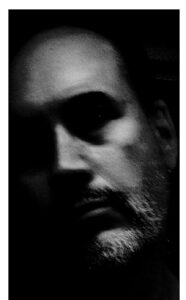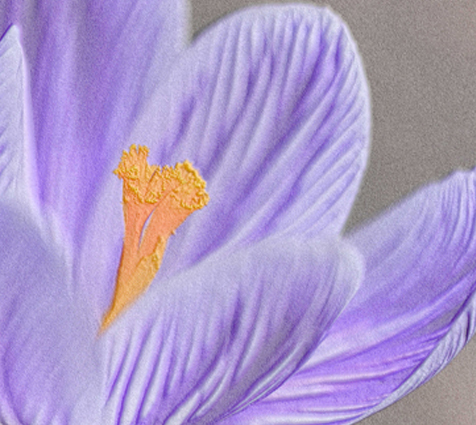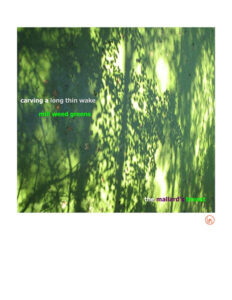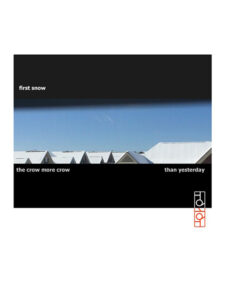Commentary by Ron Moss
Haiga Showcase: Gary LeBel

I have had the pleasure of knowing Gary and his haiga over a number of years, and he never ceases to amaze and inspire me. In his artist’s statement, he says that everything and anything can be expressed in haiga—something I also feel very strongly about—and the four pieces I have selected show his range. Each exhibits strong design elements and pictorial expressions, as well as an evocative haiku:
• We see in the haiga “carving a long thin wake” how, by using the different coloured fonts, Gary has matched and blended the text with the background vegetation, and given the mallard text its own distinctive colour. This image, as with the others, is presented on a scroll-like background that gives the “white space” needed for all the elements to breath. The use of a Gary’s seal gives us that splash of red that is so widely used in traditional Eastern haiga.
• “first snow” and “summer sea” have strong angular shapes with colours that contrast with black. This gives a feeling of abstraction, almost to the point of being one with the landscape. In “summer sea,” strong brushwork suggests a dolphin’s fin gliding through the blue. With “first snow,” the blackness connects with the crow and almost overwhelms the haiga. The interesting view of the roofs connects with the shape of the dolphin’s fin in “summer sea.”
• There’s a lovely humour in “counting winter stars” as “she” runs out of fingers counting them. The finger-like starfish shapes connects with stars in the heavens. This crafts a fine association in words and image that makes this haiga, along with the others in this collection, a crowning success or poetry and art.
Gary explains in his own words:
I have been involved in image-making, whether visually or in poetry and prose, for many years. I was initially moved to create my own haiga after finding a copy of Harold Stewart’s A Net of Fireflies in a dusty thrift store one day, still a delightful and ageless book.
Aesthetically, I believe that one is virtually unlimited regarding concepts, forms, and materials that may be employed. I enjoy using altered photographs, transparencies, painting, collage, assemblage, and sometimes scraps of paper and other objects found in parking lots and other places, for there really are no boundaries for expression in the genre or any other.





Love these, the “first snow especially “ 👍